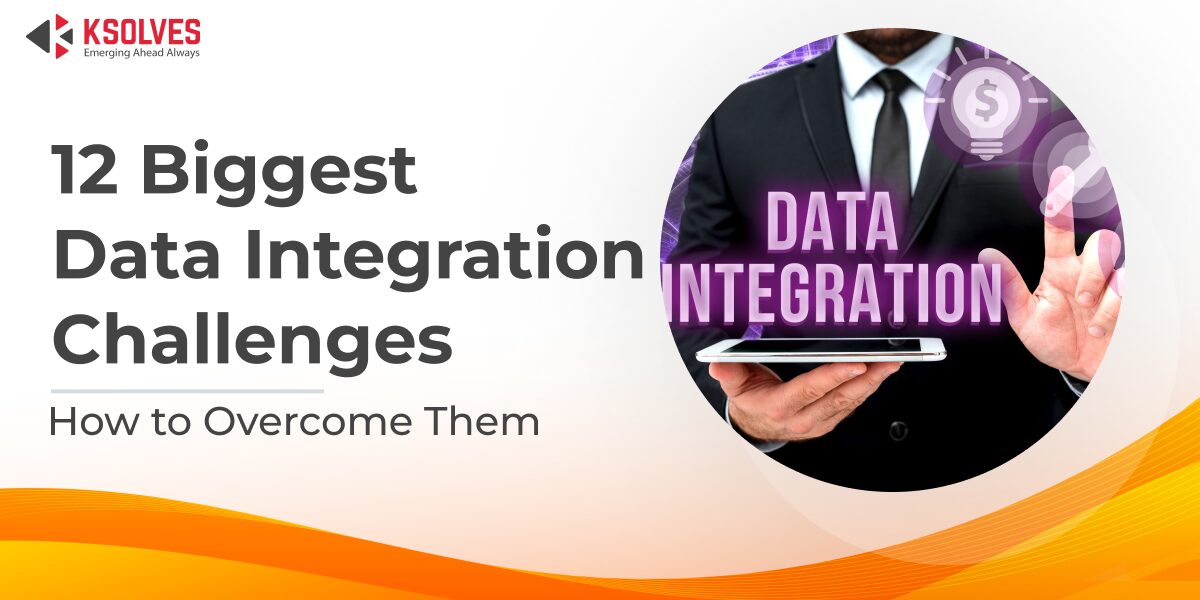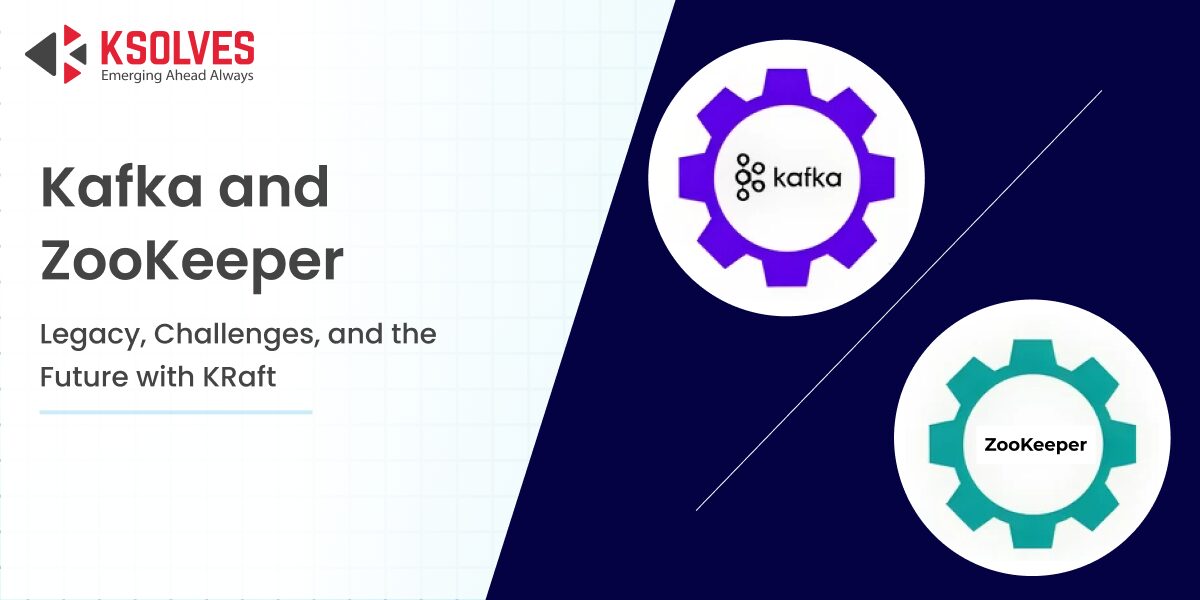12 Biggest Data Integration Challenges and How to Overcome Them
Big Data
5 MIN READ
November 24, 2025
![]()

Data integration has long played a crucial role in business intelligence, but in today’s digital era, it has become indispensable. With the explosion of data from social media platforms, IoT sensors, mobile apps, and countless other digital channels, organizations are now faced with an overwhelming challenge: how to bring all of this information together in a meaningful way.
Since no two businesses have the same systems, workflows, or goals, their integration challenges also differ. That’s why it’s essential to understand the common roadblocks and how to address them. In this blog, we’ll break down 12 key data integration challenges along with practical solutions, helping you streamline your data pipelines, strengthen governance, and unlock the full potential of your information assets.
What is Data Integration?
Data integration is the process of combining information from different sources into a single, unified view. Instead of leaving data scattered across CRMs, ERPs, cloud apps, or IoT devices, integration connects these systems to create a seamless flow of information.
It typically involves three key components: data sources, a central integration platform that cleans and transforms the data, and end-users who access it for analytics or operational purposes.
By breaking down silos, data integration helps businesses gain real-time visibility, improve decision-making, and unlock more value from their data.
A typical data integration solution involves three major components:
- Data sources – where the information originates (databases, applications, APIs, etc.).
- A central integration platform or server, which collects, cleanses, and transforms the data.
- End-users or client systems that access the unified data for reporting, analytics, and day-to-day operations.
Establishing a Common Understanding of Data
The Challenge:
Different teams often use the same data in different ways. For example, the Sales team may interpret “customer value” differently from the Finance team. Without a shared understanding, integrated data quickly becomes inconsistent, leading to errors and miscommunication.
The Solution:
- Data Governance & Stewardship – Define clear data standards and enforce them through governance frameworks.
- Appoint Data Stewards – Assign individuals to oversee how data is defined, shared, and used across departments. They act as a bridge between IT and business teams.
This ensures that everyone speaks the same “data language” and uses information consistently.
Grasping the Complexity of Source and Destination Systems
The Challenge:
Integration often involves moving data from diverse source systems (e.g., CRM, ERP, databases) into a target system (like a data warehouse). These systems differ in structure, update cycles, and formats. Without a thorough understanding, integration becomes fragile and error-prone.
The Solution:
- Training your team on the specifics of source and target systems.
- Documentation of data formats, update frequencies, and transformation rules.
- Data Mapping Tools to visualize how source fields align with target fields.
This combination reduces confusion and makes troubleshooting faster when issues arise.
Bringing Together Diverse Data Formats
The Challenge:
One system might store customer names as “First Name + Last Name,” while another stores them as a single “Full Name.” These structural differences across databases and applications make integration messy. Without proper handling, you risk data loss or misinterpretation.
The Solution:
- Use ETL Tools (Extract, Transform, Load) to standardize data formats before integration.
- Consider Managed Integration Platforms that simplify the handling of multiple schemas and automate much of the heavy lifting.
The result? Clean, uniform data that’s ready for analysis.
Read: ETL vs. ELT: Key Differences and When to Use Each
Scaling Integration for Growing Data Volumes
The Challenge:
With the explosion of IoT devices, mobile apps, and digital transactions, organizations are generating terabytes, even petabytes of data. Traditional methods often can’t keep up, leading to slow processing or failed integrations.
The Solution:
- Adopt modern data management platforms with distributed storage and parallel processing.
- Implement incremental loading, which moves data in smaller batches instead of all at once, reducing strain on systems.
This ensures faster integration with fewer failures.
Keeping the Integration Infrastructure Resilient
The Challenge:
Integration relies on a stable infrastructure. Hardware failures, network outages, or software upgrades can easily disrupt the flow of data. Even minor downtime can affect analytics and business operations.
The Solution:
- Perform ecosystem verification before starting integrations — test connectivity, server performance, and platform compatibility.
- Use robust, scalable solutions that adapt to changes in system requirements.
Strong infrastructure is the backbone of reliable data integration.
Preventing Budget Surprises in the Data Project
The Challenge:
Even with careful planning, costs can balloon. Changes in data structures, sudden workflow updates, or additional compliance requirements can lead to unbudgeted expenses.
The Solution:
- Prepare contingency budgets to absorb unexpected costs.
- Monitor processes regularly to catch inefficiencies early, before they drain resources.
With proactive planning, data integration projects remain cost-effective instead of spiraling out of control.
Making Data Easily Accessible Across Platforms
The Challenge:
Data often resides in silos, cloud apps, on-premises databases, and third-party platforms. Without proper accessibility, integration becomes slow and dependent on manual extraction.
The Solution:
- Create centralized data repositories or data lakes where all teams can pull from a single source of truth.
- Apply data governance policies to define who can access what, ensuring security and compliance while maintaining accessibility.
Centralization makes integration smoother and faster.
Ensuring Accuracy and Reliability of Data
The Challenge:
Low-quality data (duplicate, incomplete, or outdated) undermines analytics. For example, if customer records are inconsistent across systems, marketing campaigns may fail or misfire.
The Solution:
- Use Data Quality Management Systems for cleansing and standardization.
- Proactively validate data at the point of entry, preventing bad data from contaminating systems.
High-quality data = high-quality decisions.
Protecting Sensitive Information During Integration
The Challenge:
Sensitive data like personal identifiers or financial details can be exposed during integration. With increasing cyber threats and stricter regulations like GDPR or HIPAA, security cannot be compromised.
The Solution:
- Encrypt data in transit and at rest.
- Use role-based access controls to restrict who can see sensitive fields.
- Deploy integration tools with built-in intrusion detection and secure transmission protocols.
This ensures compliance and builds trust with customers and regulators alike.
Detecting and Eliminating Duplicate Records
The Challenge:
Duplicates sneak in through manual entry errors, system overlaps, or inconsistent formats. They waste storage, skew analytics, and mislead decision-makers.
The Solution:
- Track data lineage to trace where duplicates originate.
- Encourage a culture of collaboration where teams share updates openly to prevent redundant records.
- Use deduplication features within integration tools.
Fewer duplicates mean cleaner insights and lower storage costs.
Tuning Integration for Better Performance
The Challenge:
As data volumes and processes grow, integration tasks can consume too many resources and slow down systems. This delays reporting and analytics.
The Solution:
- Upgrade hardware and network capacity where needed.
- Use load balancing to distribute tasks across multiple servers.
- Optimize ETL workflows with efficient algorithms to minimize resource usage.
This keeps systems running fast, even under heavy workloads.
Achieving Real-Time Data Flow Without Delays
The Challenge:
In industries like finance, e-commerce, and logistics, decisions depend on real-time insights. Batch processing isn’t enough, businesses need integration that happens as data is generated.
The Solution:
- Build event-driven architectures that trigger workflows when new data arrives.
- Use stream processing technologies (like Apache Kafka or Flink) for real-time data handling.
- Implement real-time integration tools designed for continuous ingestion and transformation.
This allows businesses to react instantly to trends, customer behaviors, and risks.
Final Thoughts
Data integration is a journey full of complexities, but with the right strategy, tools, and governance, these challenges can be turned into opportunities. By tackling issues like data quality, accessibility, and security head-on, organizations can build reliable pipelines that deliver accurate, real-time insights when they matter most.
Instead of being a roadblock, data integration can become the foundation of business growth, innovation, and competitive advantage. Are you struggling with fragmented systems, duplicate records, or real-time data demands? We are here to help you. Ksolves certified professionals bring deep expertise in data integration and big data analytics solutions, helping businesses turn messy, siloed data into actionable insights.
![]()







AUTHOR
Big Data
Anil Kushwaha, Technology Head at Ksolves, is an expert in Big Data. With over 11 years at Ksolves, he has been pivotal in driving innovative, high-volume data solutions with technologies like Nifi, Cassandra, Spark, Hadoop, etc. Passionate about advancing tech, he ensures smooth data warehousing for client success through tailored, cutting-edge strategies.
Share with